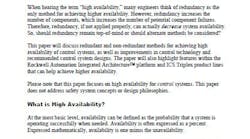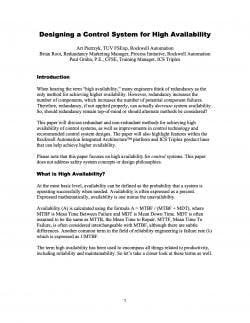When hearing the term "high availability," many engineers think of redundancy as the only method for achieving higher availability. However, redundancy increases the number of components, which increases the number of potential component failures. Therefore, redundancy, if not applied properly, can actually decrease system availability. So, should redundancy remain top-of-mind or should alternate methods be considered?
At the most basic level, availability can be defined as the probability that a system is operating successfully when needed. Availability is often expressed as a percent. Expressed mathematically, availability is one minus the unavailability.
Availability (A) is calculated using the formula A = MTBF / (MTBF + MDT), where MTBF is Mean Time Between Failure and MDT is Mean Down Time. MDT is often assumed to be the same as MTTR, the Mean Time to Repair. MTTF, Mean Time To Failure, is often considered interchangeable with MTBF, although there are subtle differences. Another common term in the field of reliability engineering is failure rate (λ) which is expressed as 1/MTBF.
Latest in Optimization
Latest in Optimization



